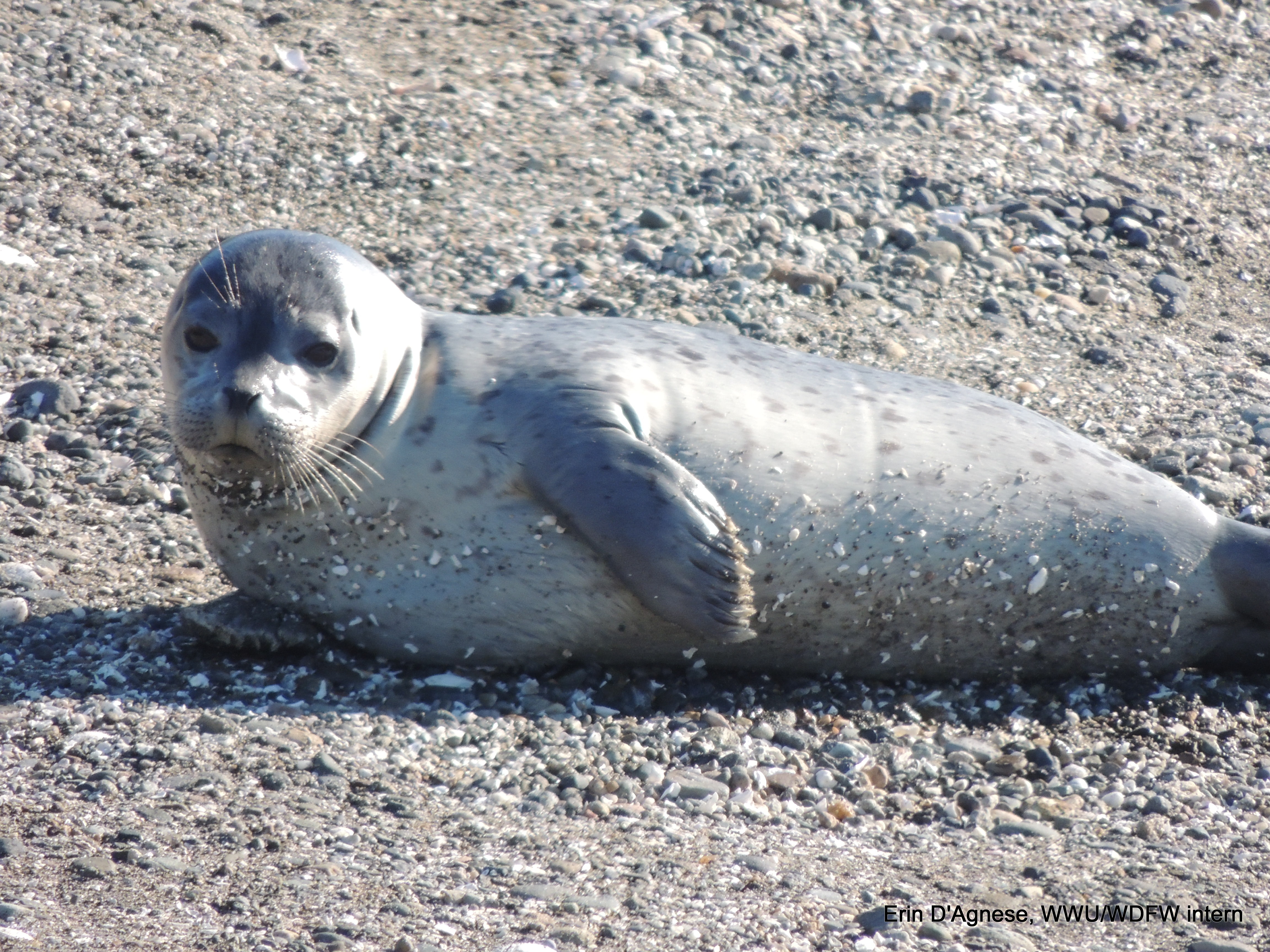October/November 2013
Erin D'Agnese, M.Sc. student
The end of field season came much faster than expected and getting everything off the island and back up to Bellingham happened in such a whirlwind that I've just now got everything back into some semblance of order. As we continue to enter data and I've started going through the thousands of pictures from the summer, the seals on the haul-out have been molting and resting, but to a lesser extent than they were up through September. You will still see the weaned pups that were born this year hauling out, but they will slowly start moving around as they get more successful at foraging. From this picture you can see they have lost some weight since they have been on their own, the first year is really tough. You will also see molting males still choosing to haul out a lot of the time while they are itchy and shedding their fur for the year.
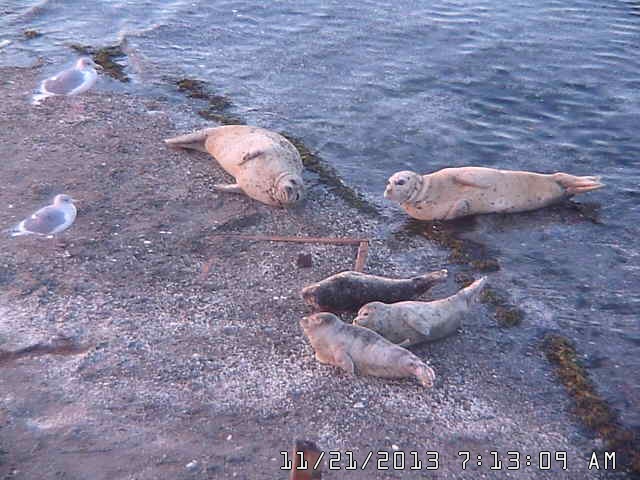
Here is another example of a seal close up during molt.
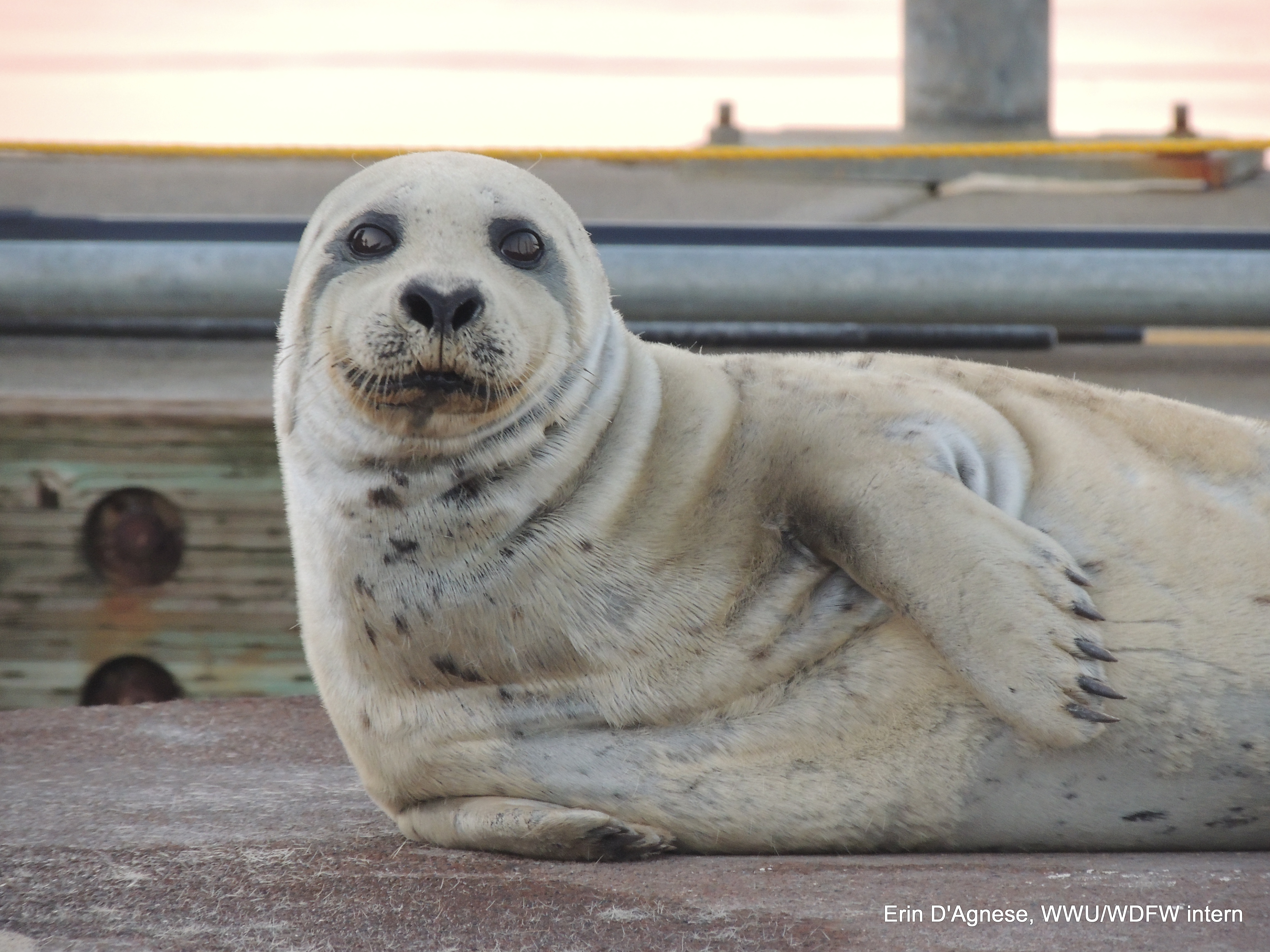
Here is one of what they look like after their molt.
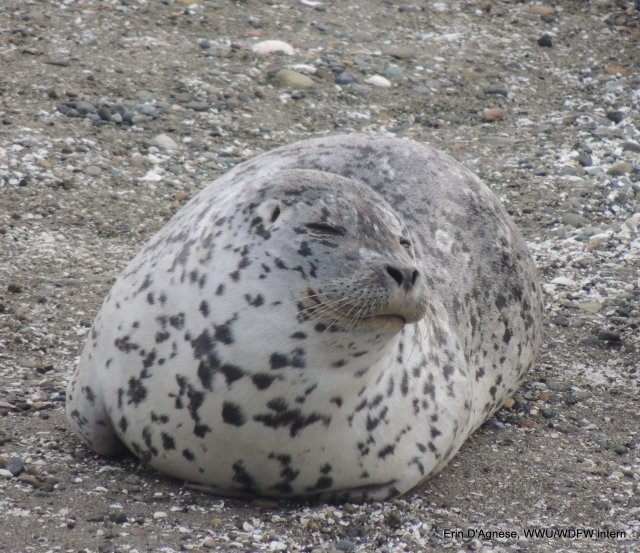
My observations from the field season ended up giving me two very interesting studies to look into. Not only will I be looking at the female and pup data I have, but I will also be analyzing the predator and scavenging trends. The coyotes had a consistent presence throughout the field season and even continuing into the fall, here is a picture from yesterday with a coyote fairly close to the seals on the haul out and not many actually spooked into the water.
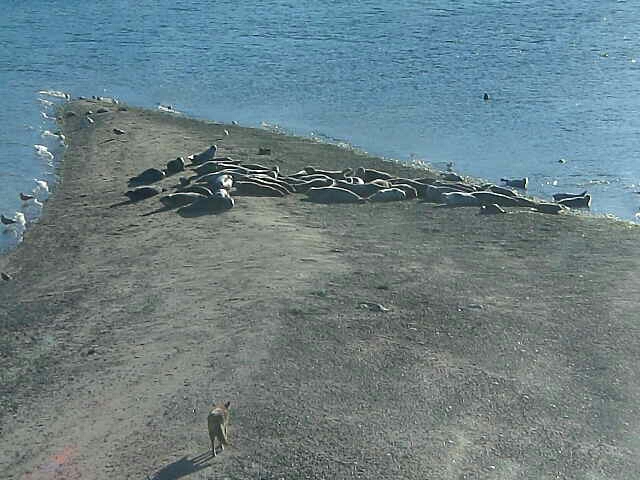
Here are some more pictures of the end of the season out on the haul-out and in the next entry I'll have some preliminary data analysis complete so I can start telling all of you what we found this summer!
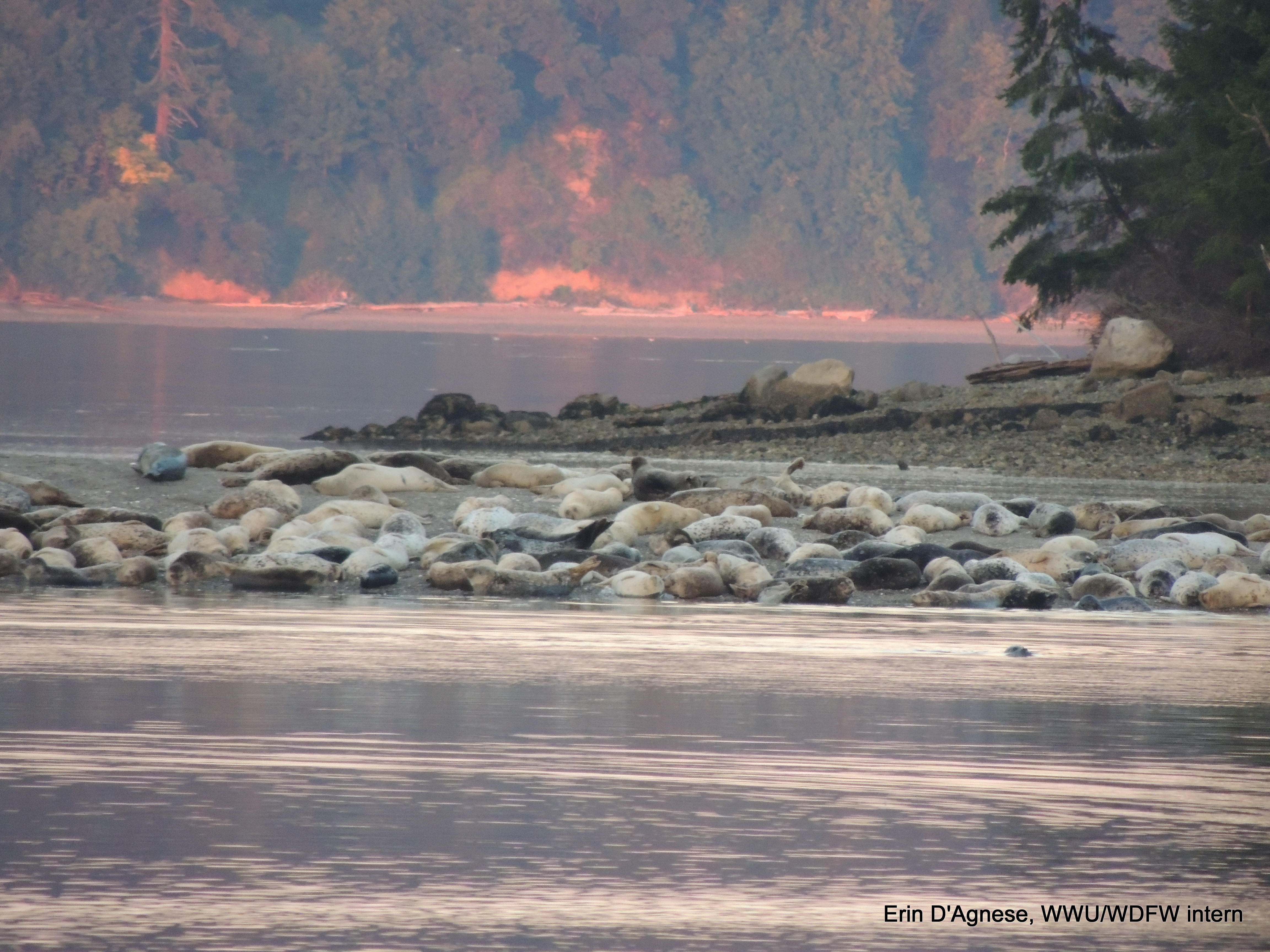
This last picture is of a healthy weaned pup late in the season.
